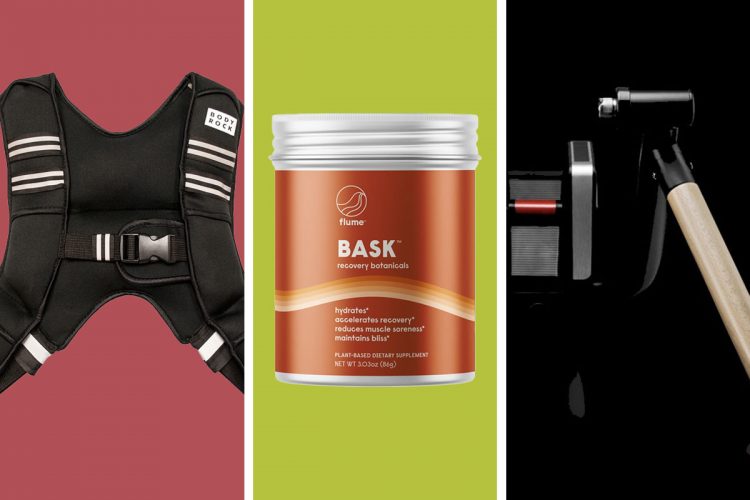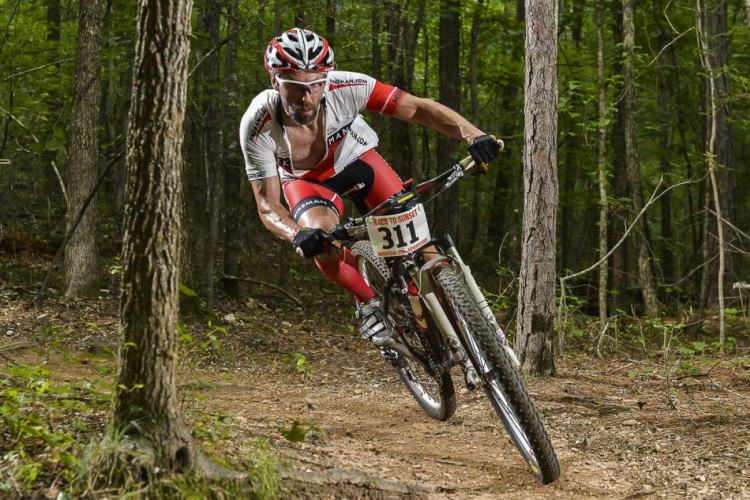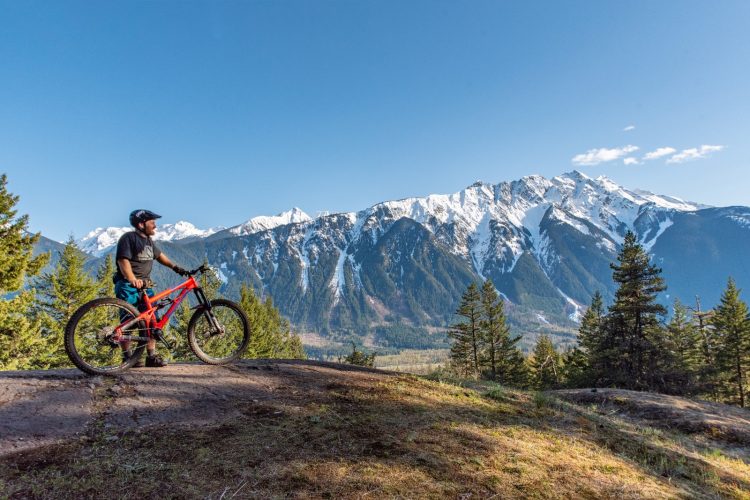
I accept a certain level of humility by riding a mountain bike in my 50s. I’m probably not going to keep up with young guns, and I fear crashing and injuries more than I did in my younger days. Even if you’re not in your 50s, those things may apply to you as well.
Depressing? Not really, just reality. But here’s the flip side: You can still improve and take on new challenges, learn new skills, or hone those you already have. There’s no age limit for improving, and it’s a good way to keep your riding fresh as you start a new riding season.
Remember in our teens and twenties, we usually learned by trial and error. When we crashed, we dusted ourselves off and tried again until we got it right, and we have the scars to prove it.
But when we get older, those crashes can result in trips to the emergency room and months of physical therapy. While I’d like to think I’ve gotten smarter with age, truth is, I’m just not as resilient as I used to be.
[see_also id=”196737″][/see_also]
Now I take a lighter approach to becoming a better mountain biker, but I still strive to improve. It might be riding farther, cleaning technical terrain, cornering faster and smoother, or being less intimidated by jumps.
Improving requires pushing myself out of my comfort zone, and like most things, the results are mixed. At times, I get frustrated and ask, “Why bother? Just ride.” But usually it’s the opposite, because I get the satisfaction of seeing results.
If you want to avoid turning yourself into a middle-aged crash-test dummy, here are some (hopefully) low-impact ways to become a better mountain biker.
1. Read Books
Every year I dig out my well-worn copy of Mastering Mountain Bike Skills by Brian Lopes and Lee McCormack. It was recommended to me by a riding pal, and honestly, I was a little offended by the suggestion because I thought it was an entry-level “Mountain Biking for Dummies” type book. But I thumbed through it at a bookstore and realized it was more like a master’s class in advanced skills, and it was money well spent.

2. Watch Experts
Whether in person or in videos, experts and pros can teach you a lot if you focus not only on what they’re doing, but how they’re doing it. Watch their body position, technique, and lines down a trail. You can also find instructional videos right here on Singletracks.com, on Youtube, and those cheeky British blokes at GMBN.com have a whole online library of how-to videos. You can also find feature-length videos on Netflix, Amazon Prime, or Red Bull TV. They typically use lots of slow-motion footage, and it’s an opportunity closely observe how experts ride.
3. Do Drills
Sounds lame riding around cones in a parking lot, but if it helps, it helps. There are lots of simple drills you can do in a parking lot, or better yet, a grassy field or vacant lot to practice everything from cornering to bunny hopping to wheelies. Drilling allows you to focus solely on one aspect of your riding. You get the benefit of repetition and building muscle memory so when you’re out on the trail, it’s instinctual.
[see_also id=”46523″][/see_also]
4. Ride Solo and Focus on Skills
This is one of my favorite things to do when a certain trail starts feeling a little stale. I pick a section and ride the whole thing out of the saddle. I try to bunny hop every rock, root, or water bar. I force myself to use perfect form in every corner, even if it means going half speed. If I really want to push myself, I do intervals, such as 40 seconds at normal pace and 20 seconds full sprint. That turns even the mellowest trail into a lung burner.
I find doing those things not only helps me improve, it makes old, familiar trails more fun and challenging.
[see_also id=”187023″][/see_also]

5. Hit the Bike Park
It wasn’t long ago that a pumptrack was as rare as a redneck in San Francisco, but pumptracks are popping up in a lot of places. They’re a good place to work on your form and understand how smooth cornering and pumping can give you extra momentum on the trail.
[see_also id=”22427″][/see_also]
6. Take a Clinic
I realize it’s not an option for everyone, but if it is, you can learn more in a weekend from a good instructor than you could in months trying to figure things out on your own.
[see_also id=”22072″][/see_also]
7. Look for New Challenges
It might be a more challenging trail, a longer ride, or shaving time off your favorite Strava segment, but set a goal and do your best to meet it. Even a few incremental improvements will make you a better all-around rider, and give you the satisfaction of meeting your goals.
[see_also id=”202461″][/see_also]
Your Turn: What tips do you have for improving your mountain bike skills at any age? Share them in the comments section below!



















